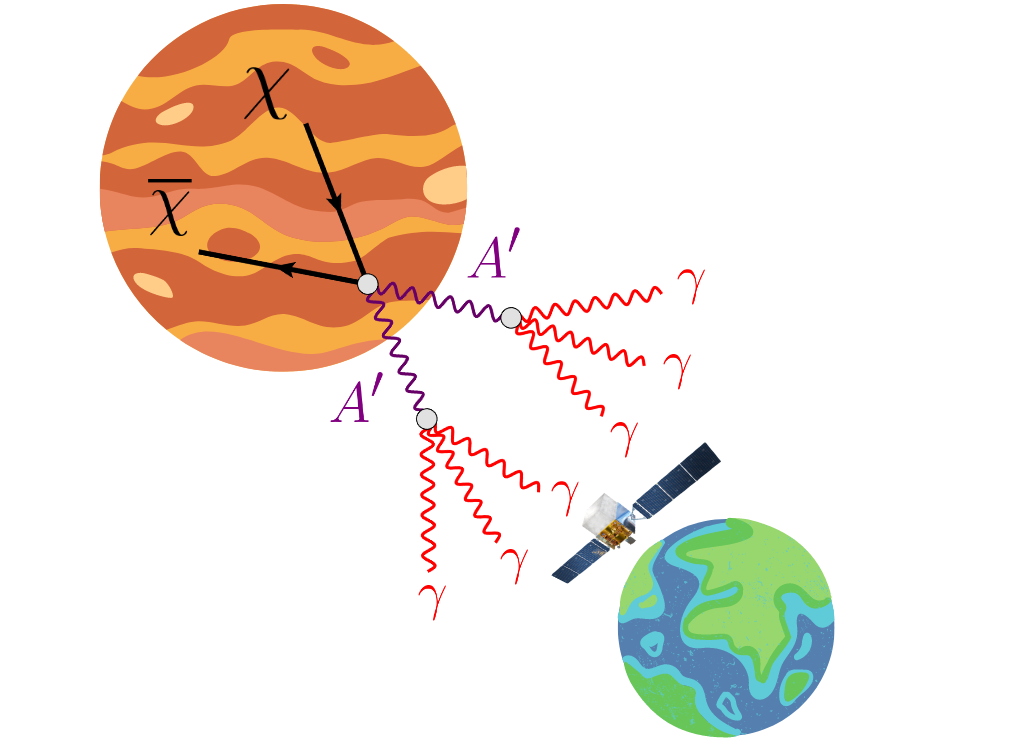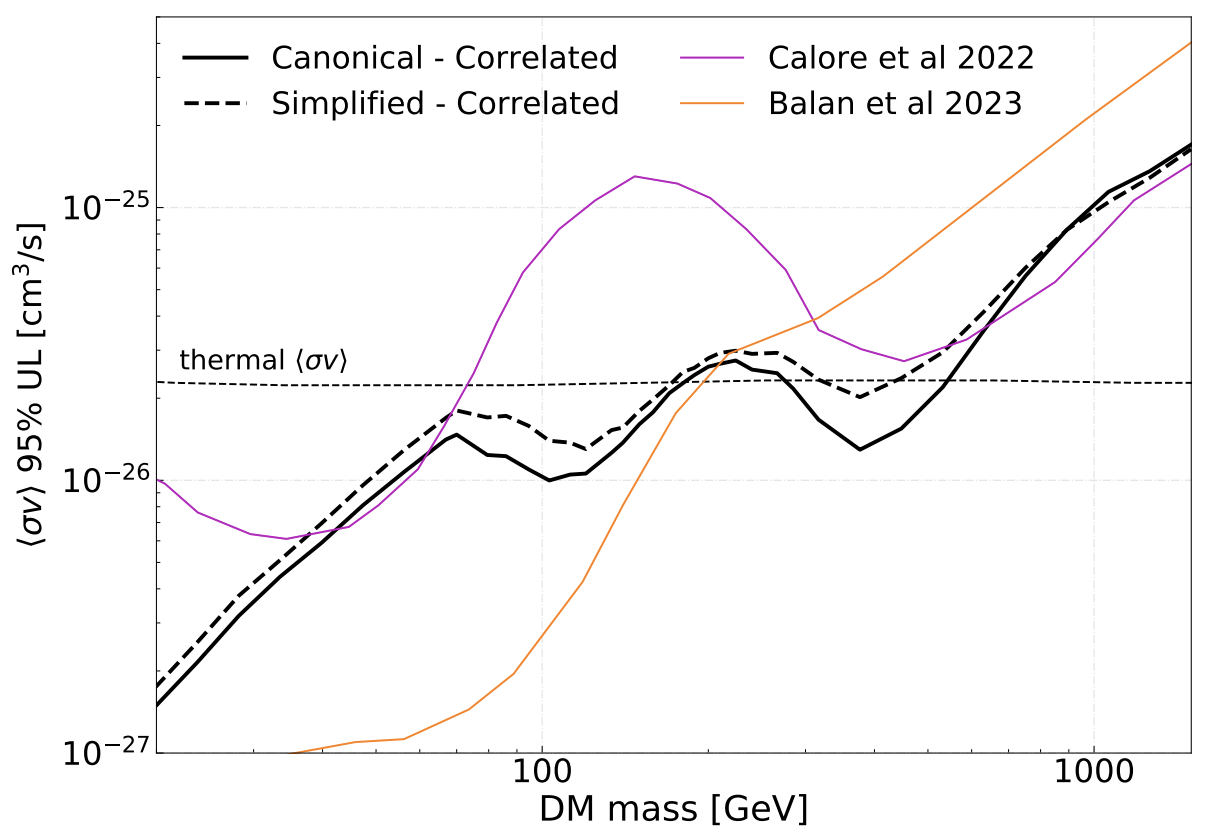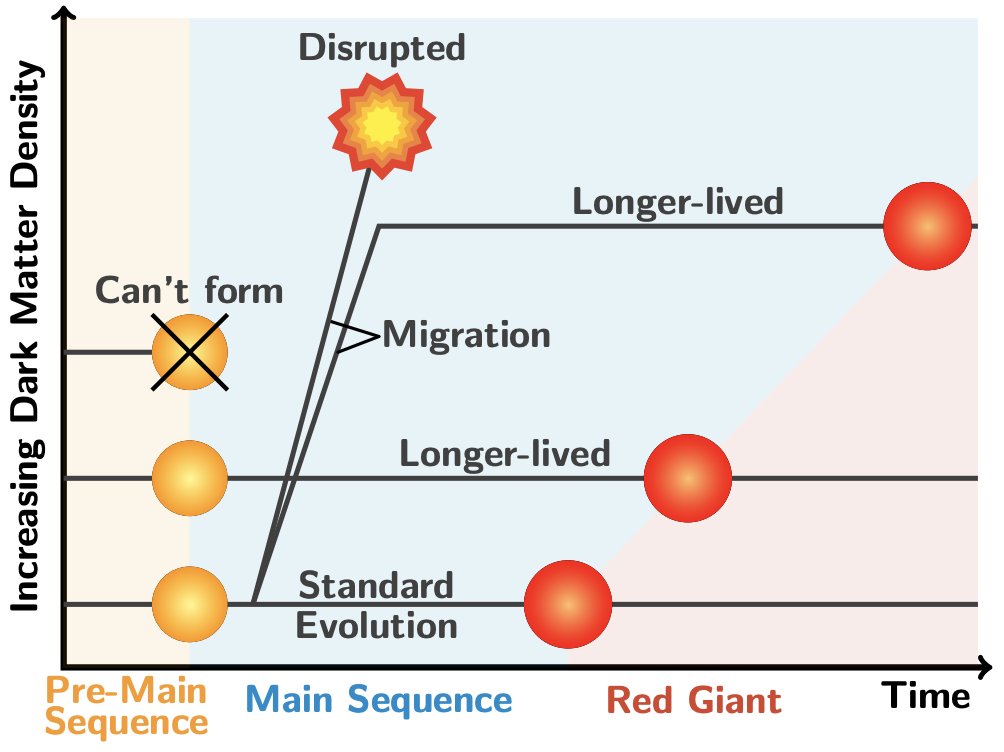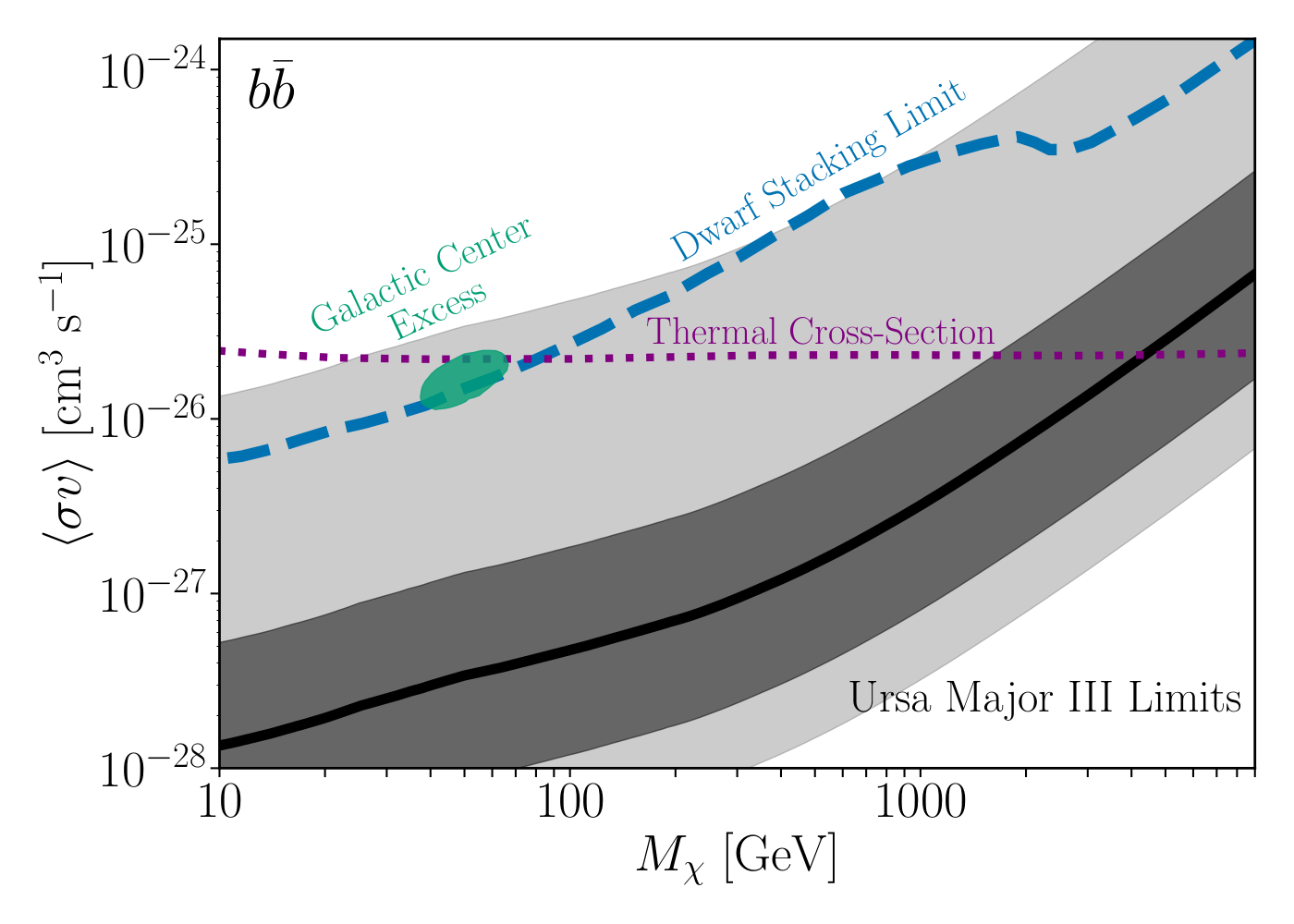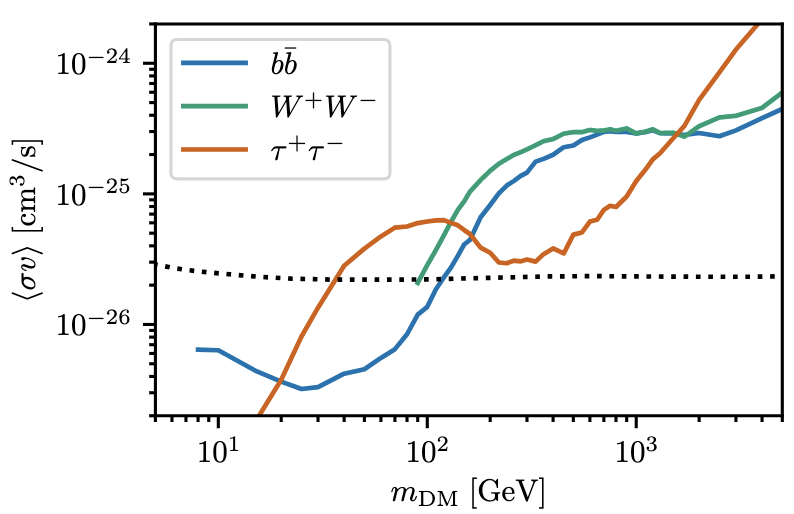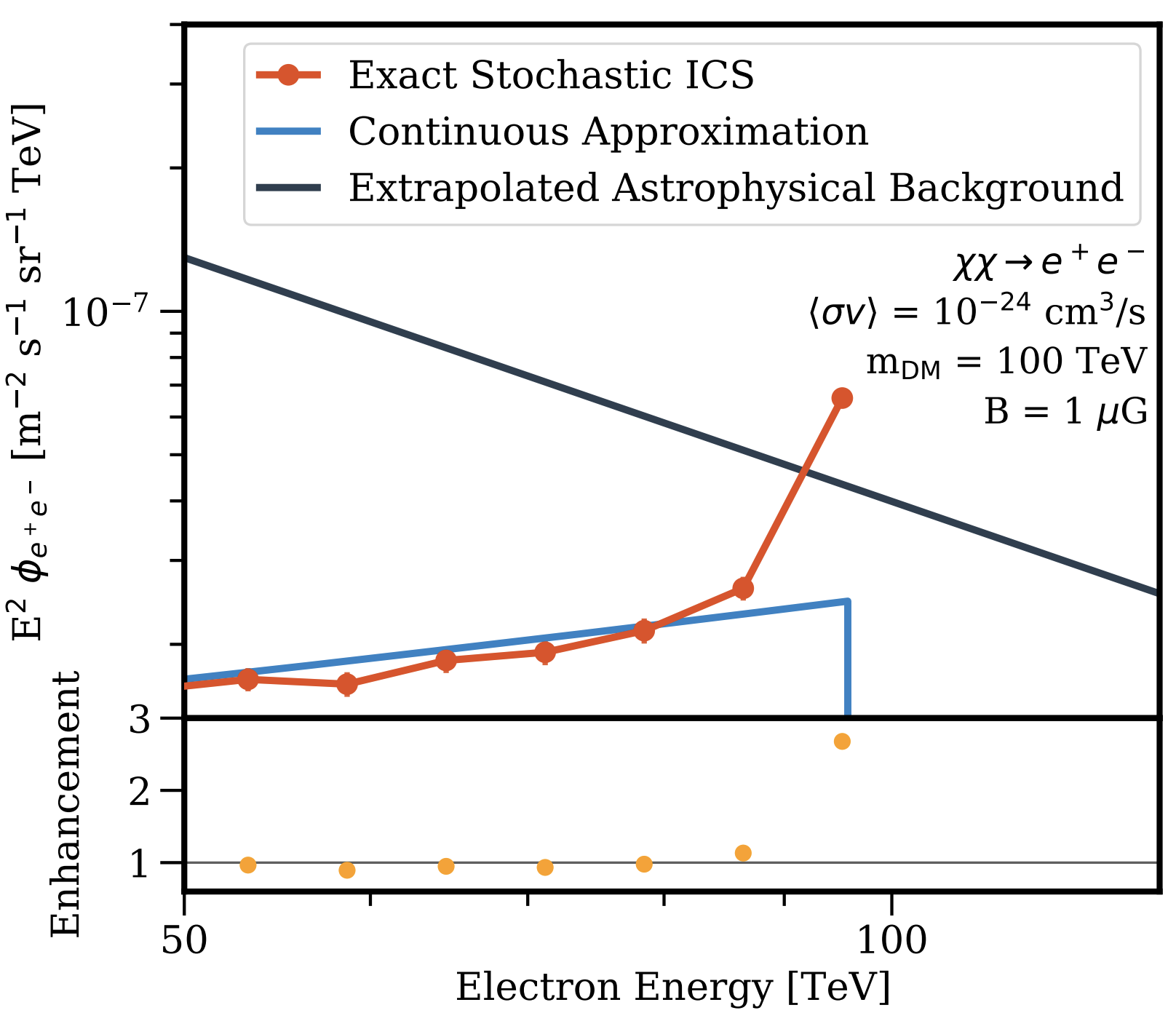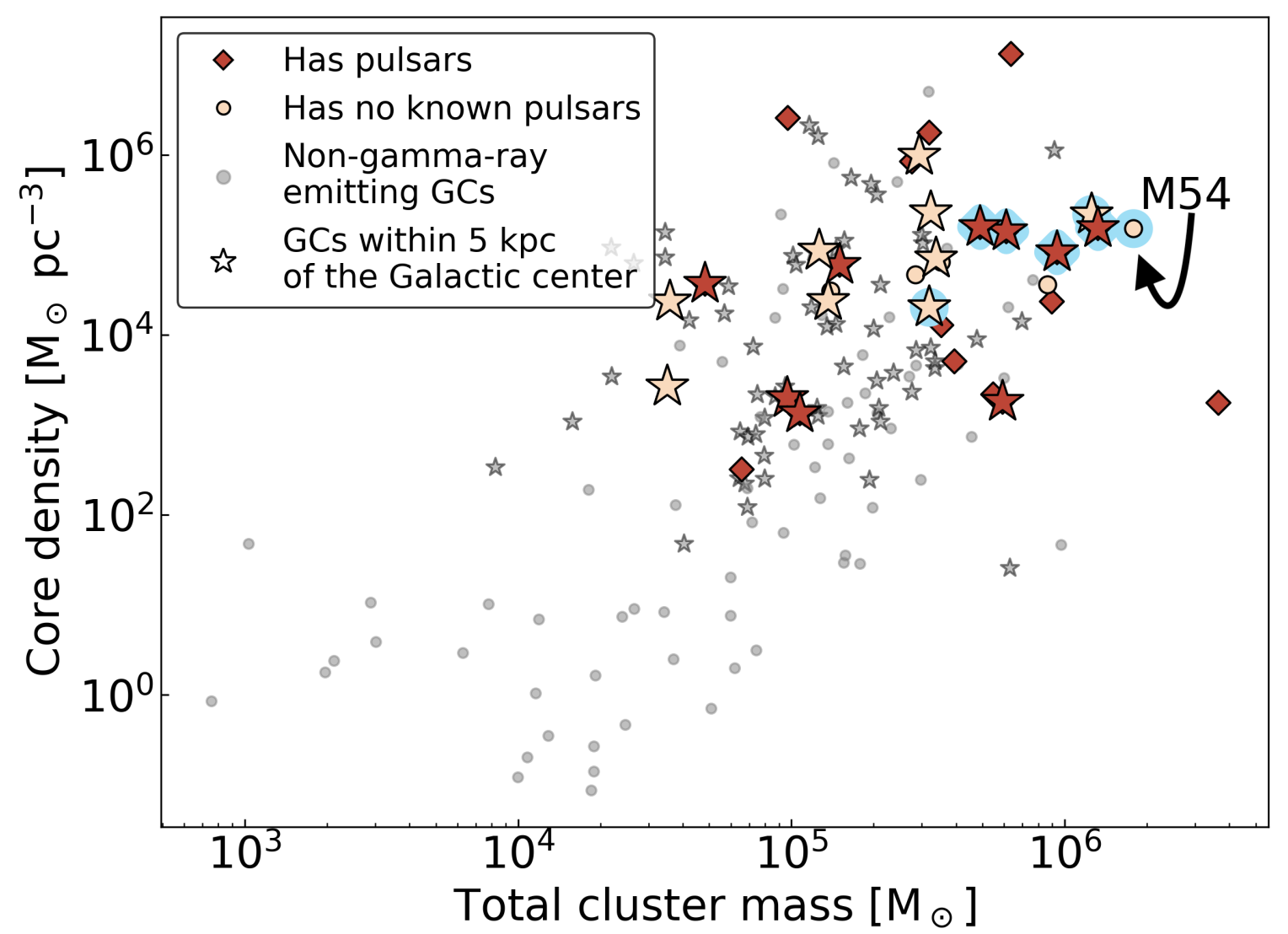61. Indirect Searches for Dark Photon-Photon Tridents in Celestial Objects
Tim Linden, Thong Nguyen, Tim Tait
To Be Submitted
60. Antiproton Bounds on Dark Matter Annihilation from a Combined Analysis Using the DRAGON2 Code
Pedro De la Torre Luque, Martin Winkler, Tim Linden
To Be Submitted to JCAP
59. Dark Matter Scattering Constraints from Observations of Stars Surrounding Sgr A*
Isabelle John, Rebecca Leane, Tim Linden
To Be Submitted
58. Strong Constraints on Dark Matter Annihilation in Ursa Major III/UNIONS 1
Milena Crnogorčević, Tim Linden
Accepted by PRD
57. Limits on dark matter annihilation in prompt cusps from the isotropic gamma-ray background
M. Sten Delos, Michael Korsmeier, Axel Widmark, Carlos Blanco, Tim Linden, Simon White
Accepted by PRD
56. Accurate Inverse-Compton Models Strongly Enhance Leptophilic Dark Matter Signals
Isabelle John, Tim Linden
Physical Review D 108 10 103022
55. On the gamma-ray emission from the core of the Sagittarius dwarf galaxy
Addy Evans, Louis Strigari, Oskar Svenborn, Andrea Albert, Pat Harding, Dan Hooper, Tim Linden, Andrew Pace
Monthly Notices of the Royal Astronomical Society 524 3 4574
54. The Cherenkov Telescope Array Will Test Whether Pulsars Generate the Galactic Center Gamma-Ray Excess
Celeste Keith, Dan Hooper, Tim Linden
Physical Review D 107 10, 103001
53. Cosmic Ray Antihelium from a Strongly Coupled Dark Sector
Martin Winkler, Pedro De la Torre Luque, Tim Linden
Physical Review D 107 12 123035 (2023)
52. White Dwarfs in Dwarf Spheroidal Galaxies: A New Class of Compact-Dark-Matter Detectors
Juri Smirnov, Ariel Goobar, Tim Linden, Edvard Mörtsell
Accepted by PRL
51. The Sensitivity of Future Gamma-Ray Telescopes to Primordial Black Holes
Celeste Keith, Dan Hooper, Tim Linden, Rayne Liu
Physical Review D 106 (2022) 4, 043003
50. Constraining Axion-Like Particles with HAWC Observations of TeV Blazars
Sunniva Jacobsen, Tim Linden, Katherine Freese
Journal of Cosmology and Astroparticle Physics 10 009
49. Extraterrestrial Axion Search with the Breakthrough Listen Galactic Center Survey
Joshua Foster, Samuel Witte, Matthew Lawson, Tim Linden, Vishal Gajjar, Christoph Weniger, Ben Safdi
Physial Review Letters 129, 251102 (2022)
48. Dark Matter Microhalos in the Solar Neighborhood: Pulsar Timing Signatures of Early Matter Domination
Sten Delos, Tim Linden
Physical Review D 105 123514
47. Cosmic-Ray Positrons Strongly Constrain Leptophilic Dark Matter
Isabelle John, Tim Linden
Journal of Cosmology and Astroparticle Physics 12 2021 007
46. Response to Comment on: "Dark Matter Annihilation Can Produce a Detectable Antihelium Flux through Λb Decays
Martin Winkler, Tim Linden
ArXiv Only
45. First Analysis of Jupiter in Gamma Rays and a New Search for Dark Matter
Rebecca Leane, Tim Linden
Physical Review Letters 131 7 071001
44. Celestial-Body Focused Dark Matter Annihilation Throughout the Galaxy
Rebecca Leane, Tim Linden, Payel Mukhopadhyay, Natalia Toro
Physical Review D, 103 (2021) 7
43. Dark Matter Annihilation Can Produce a Detectable Antihelium Flux through Λb Decays
Martin Wolfgang Winkler, Tim Linden
Physical Review Letters 126 101101
42. Anti-Deuterons and Anti-Helium Nuclei from Annihilating Dark Matter
Ilias Cholis, Tim Linden, Dan Hooper
Physical Review D 102 103019
41. Breaking a Dark Degeneracy: The gamma-ray signature of early matter domination
M. Sten Delos, Tim Linden, Adrienne Erickcek
Physical Review D 100 123546
40. A Robust Method for Treating Astrophysical Mismodeling in Dark Matter Annihilation Searches of Dwarf Spheroidal Galaxies
Tim Linden
Physical Review D 043017
39. A Robust Excess in the Cosmic-Ray Antiproton Spectrum: Implications for Annihilating Dark Matter
Ilias Cholis, Tim Linden, Dan Hooper
Physical Review D 99 103026
38. Constraints on Spin-Dependent Dark Matter Scattering with Long-Lived Mediators from TeV Observations of the Sun with HAWC
HAWC Collaboration
Physical Review D 98 123012
37. Millisecond Pulsars, TeV Halos, and Implications for the Galactic Center Gamma-Ray Excess
Dan Hooper, Tim Linden
Physical Review D 98 043005
36. Comment on "Characterizing the Population of Pulsars in the Galactic Bulge with the Fermi Large Area Telescope" [arXiv: 1705.00009v1]
Richard Bartels, Dan Hooper, Tim Linden, Siddharth Mishra-Sharma, Nick Rodd, Ben Safdi, Tracy Slatyer
Physics of the Dark Universe 20 88 2018
35. Searching for Dark Matter with Neutron Star Mergers and Quiet Kilonovae
Joe Bramante, Tim Linden, Yu-Dai Tsai
Physical Review D 97 055016
34. Dark Kinetic Heating of Neutron Stars: An Infrared Window On WIMPs, SIMPs, and Higgsinos
Masha Baryakhtar, Joe Bramante, Shirley Li, Tim Linden, Nirmal Raj
Physical Review Letters 119 131801
33. Low Mass X-Ray Binaries in the Inner Galaxy: Implications for MSPs and the GeV Excess
Daryl Haggard, Craig Heinke, Dan Hooper, Tim Linden
Journal of Cosmology and Astroparticle Physics 1705 05 056
32. The Angular Power Spectrum of diffuse gamma-rays measured by Fermi and DM constraints
M. Fornasa, A. Cuoco, J. Zavala, J. Gaskins, M. Sanchez-Conde, G. Gomez-Vargas, E. Komatsu, Tim Linden, F. Prada, F. Zandenel, A. Morselli
Physical Review D 94, 123005
31. The Gamma-Ray Pulsar Population of Globular Clusters: Implications for the GeV Excess
Dan Hooper, Tim Linden
Journal of Cosmology and Astroparticle Physics 1608 08 018
30. Indirect Detection Constraints on s and t Channel Simplified Models of Dark Matter
Linda Carpenter, Russell Colburn, Jessica Goodman, Tim Linden
Physical Review D 94 055027
29. Radio Galaxies Dominate the High-Energy Diffuse Gamma-Ray Background
Dan Hooper, Tim Linden, Alejandro Lopez
Journal of Cosmology and Astroparticle Physics 1608 08 019
28. The High-Energy Tail of the Galactic Center Gamma-Ray Excess
Tim Linden, Nicholas Rodd, Benjamin Safdi, Tracy Slatyer
Physical Review D 94, 103013
27. Improved Cosmic-Ray Injection Models and the Galactic Center Gamma-Ray Excess
Eric Carlson, Tim Linden, Stefano Profumo
Physical Review D 94 063504
26. Is the Gamma-Ray Source J2212.5+0703 A Dark Matter Subhalo?
Bridget Bertoni, Dan Hooper, Tim Linden
Journal of Cosmology and Astroparticle Physics 1609 05 049
25. On the R-Process Enrichment of Dwarf Spheroidal Galaxies
Joseph Bramante, Tim Linden
The Astrophysical Journal 826 1 57
24. Putting Things Back Where They Belong: Tracing Cosmic-Ray Injection with H2
Eric Carlson, Tim Linden, Stefano Profumo
Physical Review Letters 117 111101
23. Known Radio Pulsars Do Not Contribute to the Galactic Center Gamma-Ray Excess
Tim Linden
Physical Review D 93 6 063003
22. The Galactic Center GeV Excess from a Series of Leptonic Cosmic-Ray Outbursts
Ilias Cholis, Carmelo Evoli, Francesca Calore, Tim Linden, Christoph Weniger, Dan Hooper
Journal of Cosmology and Astroparticle Physics 1512 12 005
21. Examining the Fermi-LAT Third Source Catalog in Search of Dark Matter Subhalos
Bridget Bertoni, Dan Hooper, Tim Linden
Journal of Cosmology and Astroparticle Physics 1512 12 035
20. On the Gamma-Ray Emission from Reticulum II and Other Dwarf Galaxies
Dan Hooper, Tim Linden
Journal of Cosmology and Astroparticle Physics 1509 09 016
19. The Galactic Center Excess in Gamma-Rays from Annihilation of Self-Interacting Dark Matter
Manoj Kaplinghat, Tim Linden, Haibo Yu
Physical Review Letters, 114 211303
18. The Anisotropy of the Extragalactic Radio Background from Dark Matter
Ke Fang, Tim Linden
Physical Review D 91 083501 (2015)
17. What Does the PAMELA Antiproton Spectrum Tell Us About Dark Matter?
Dan Hooper, Tim Linden, Philipp Mertsch
Journal of Cosmology and Astroparticle Physics 03 021 (2015)
16. Improving the Sensitivity to Dark Matter Annihilation in Dwarf Spheroidal Galaxies
Eric Carlson, Dan Hooper, Tim Linden
Physical Review D, 91 061302 (2015)
15. A Critical Reevaluation of Radio Constraints on Annihilating Dark Matter
Ilias Cholis, Dan Hooper, Tim Linden
Physical Review D, 91 083507 (2015)
14. Challenges in Explaining the Galactic Center Gamma-Ray Excess with Millisecond Pulsars
Ilias Cholis, Dan Hooper, Tim Linden
Journal of Cosmology and Astroparticle Physics, 06 043 (2015)
13. Detecting Dark Matter with Imploding Pulsars in the Galactic Center
Joseph Bramante, Tim Linden
Physical Review Letters, 113 191301
12. Searching for Dark Matter Annihilation in the Smith High-Velocity Cloud
Alex Drlica-Wagner, German Gomez-Vargas, Jack Hewitt, Tim Linden, Luigi Tibaldo
The Astrophysical Journal, 790 24
11. The Characterization of the Gamma-Ray Signal from the Central Milky Way
Tansu Daylan, Doug Finkbeiner, Dan Hooper, Tim Linden, Stephen Portillo, Nicholas Rodd, Tracy Slatyer
Physics of the Dark Universe 12 2016 1
10. Antihelium from Dark Matter
Eric Carlson, Adam Coogan, Tim Linden, Stefano Profumo, Alejandro Ibarra, Sebastian Wild
Physical Review D, 89 076005
9. Tying Dark Matter to Baryons with Self-Interactions
Manoj Kaplinghat, Ryan Keeley, Tim Linden, Haibo Yu
Physical Review Letters, 113 021302 (2014)
8. Pulsars Cannot Account for the Inner Galaxy's GeV Excess
Dan Hooper, Ilias Cholis, Tim Linden, Jennifer Siegal-Gaskins, Tracy Slatyer
Physical Review D, 88 083009
7. A Clustering Analysis of the 130 GeV Gamma-Ray Feature
Eric Carlson, Tim Linden, Stefano Profumo, Christoph Weniger
Physical Review D, 88 043006
6. Are Lines from Unassociated Gamma-Ray Sources Evidence for Dark Matter Annihilation?
Dan Hooper, Tim Linden
Physical Review D, 86 8 083532
5. Gamma-Rays in the Fermi-LAT Data: Is it a Bubble?
Stefano Profumo, Tim Linden
Journal of Cosmology and Astroparticle Physics, 007 011
4. The Isotropic Radio Background and Annihilating Dark Matter
Dan Hooper, Alexander Belikov, Tesla Jeltema, Tim Linden, Stefano Profumo, Tracy Slatyer
Physical Review D, 86 10 103003
3. Origin of Gamma-Rays from the Galactic Center
Dan Hooper, Tim Linden
Physical Review D, 84 12 123005
2. Dark Matter and Synchrotron Emission from Galactic Center Radio Filaments
Tim Linden, Dan Hooper, Farhad Yusef-Zadeh
The Astrophysical Journal, 741 2 95
1. Gamma-Rays from the Galactic Center and the WMAP Haze
Dan Hooper, Tim Linden
Physics Review D, 83 8 083517 (2011)
